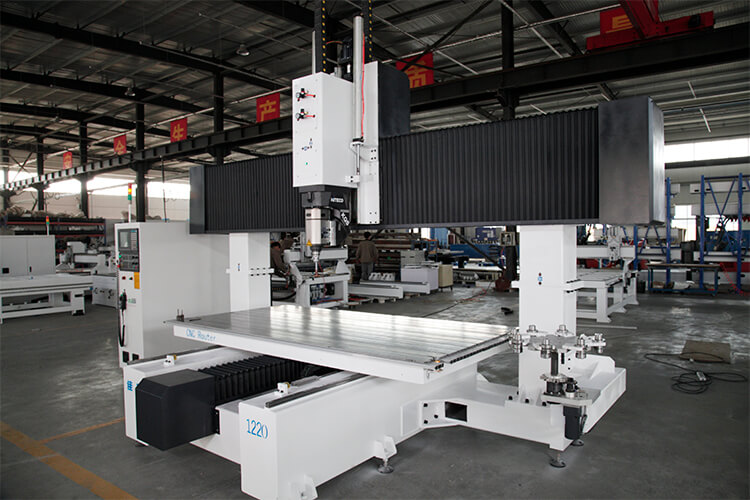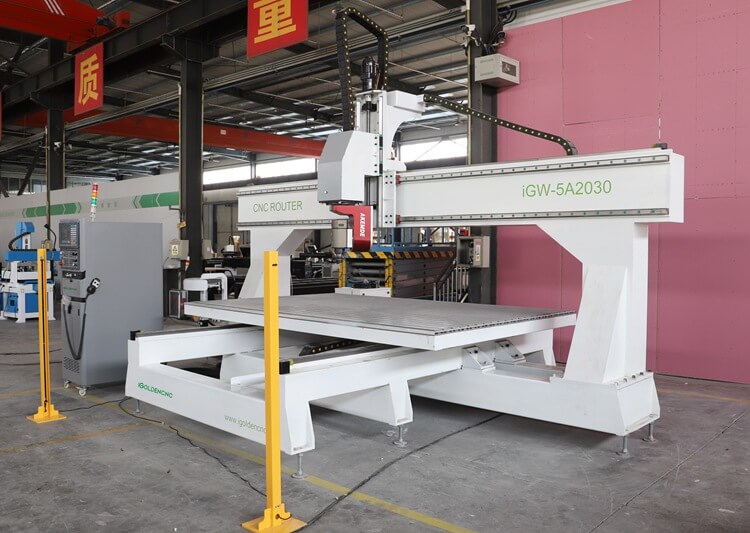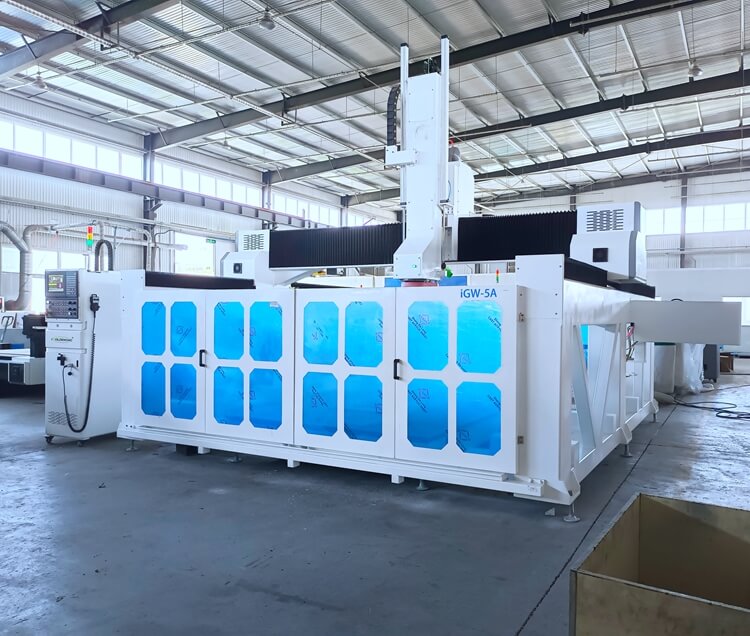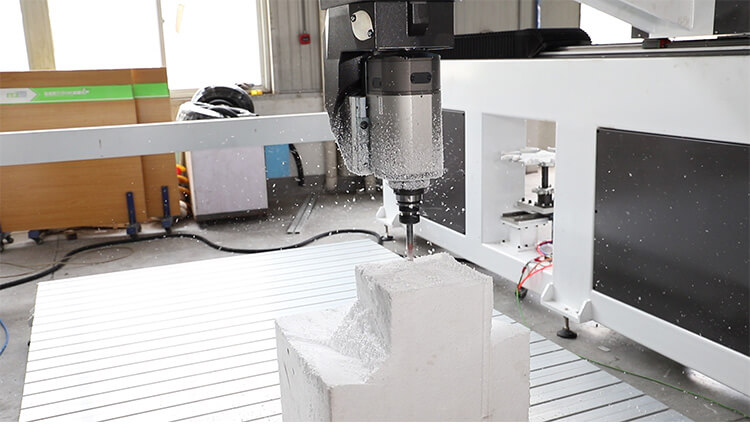This 5 axis CNC router machine is a 5 axis industrial CNC machining center. And the large 5 axis CNC router machine is designed for industrial use. As a CNC foam wood aluminum router cutter, it can process many materials. The work size of this CNC router machine is can be custom-made, and the length could be as long as 12 meters, and the width of the machine could be as wide as 3 meters, Z working height of the machine could be 2 meters. If you have a large factory, then I think this machine is very suitable for you. It can process almost all kinds of materials and apply to most of the engraving fields. including manufacturing, aerospace, automotive, and woodworking.

5 Axis CNC Router Application
- 3D Carving and Sculpting: 5-axis CNC router are commonly used for creating intricate 3D sculptures and carvings in materials like wood, foam, and stone.
- Mold Making: These machines are essential in the production of molds for various industries, including automotive and aerospace. They can accurately produce complex molds with fine details.
- Prototyping: In product design and development, 5-axis CNC routers help in the creation of prototypes and prototypes with highly detailed surfaces.
- Aerospace and Automotive: These machines are used to produce components with complex geometries, like turbine blades, aircraft parts, and automotive molds.
- Furniture Manufacturing: Woodworking industries utilize 5-axis CNC routers for creating intricate and customized furniture designs.
- Signage and Displays: They are employed in creating detailed signs, displays, and decorative elements. Theater and Movie Sets: The entertainment industry often uses these machines to fabricate elaborate set pieces and props.

Features of 5 Axis CNC Router Machine
- 5-Axis Capability: The term “5-axis” refers to the machine’s ability to move the cutting tool in five different directions: X, Y, and Z for linear movements and A and B for rotational movements. This allows for complex and precise 3D shaping and contouring of materials.
- Large Working Area: These machines typically have a spacious work envelope that can accommodate sizable workpieces. The size of the work area can vary depending on the specific model and manufacturer.
- High-Precision Machining: 5-axis CNC routers are known for their precision, making them suitable for intricate and high-tolerance work, such as 3D modeling, sculpting, and mold making.
- Versatile Material Compatibility: These machines can work with a range of materials, including foam, wood, aluminum, EPS, plastics, and composites, making them versatile for various applications.
- Automatic Tool Changes (ATC): Many 5-axis CNC routers are equipped with automatic tool changers, allowing the machine to switch between different cutting tools without manual intervention, further enhancing efficiency.
- Dust Collection Systems: To maintain a clean work environment and minimize dust and debris, these machines often come with integrated dust collection systems.
How Many Types Of 5 Axis CNC Router Are There?
There are many ways to classify 5 axis CNC router, and the common ones are the following: There are 5 axis CNC wood router, 5 axis foam router, 5 axis CNC stone router, and hobby 5 axis CNC router from the different applicable industry. From the motion of the machine, there are 5 axis CNC gantry router and 5-axis table-moving router. There are mini 5 axis CNC router, large 5 axis CNC router, and desktop 5 axis CNC router from the perspective of different machining sizes.

5 Axis CNC Router Machine Working Principle
First, let’s learn something about “axis”:
X-axis: front to back.
Y-axis: left to right.
Z-axis: up and down.
A, B or C axis is corresponding to the rotation axis of X, Y and Z axes.
Five axis: X-Y-Z-A-B, X-Y-Z-A-C, X-Y-Z-B-C (The spindle can be rotated left and right with 180 degrees around.)

Five axis CNC machines move a part or tool on five different axis at the same time via CNC programming. 3 axis CNC machines move a part in two directions with X axis and Y axis, and the tool moves up and down with Z axis. Five axis CNC machines can rotate on two additional rotary axis (A aixs and B axis) which will help the tool to approach the part from all directions.
Five-axis linkage machining technology refers to the processing technology that a complex shape surface needs to use 5 independent axes to perform numerical control interpolation movement together to obtain a smooth and smooth surface. The number of axes for five-axis simultaneous machining refers to the number of axes that need to move independently when processing the same surface, rather than the number of controllable axes owned by the CNC. Although theoretically any complex surface can be expressed by X, Y, Z three-axis coordinates, the actual machining tool is not a point, but an entity with a certain size, in order to avoid the occurrence of tool and processing when processing the space distorted surface The interference between the surfaces and to ensure the consistency of the cutting conditions at each point on the surface require adjustment of the angle between the tool axis and the surface normal in the 2D direction. Compared with the three-axis linkage, the five-axis linkage can reduce the machining error and surface roughness to 1/3~1/6.
Discussion (0)
There are no comments for this doc yet.